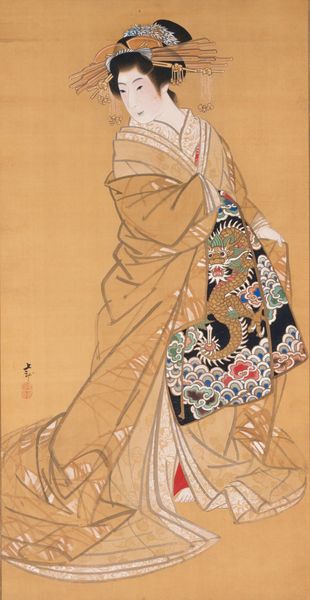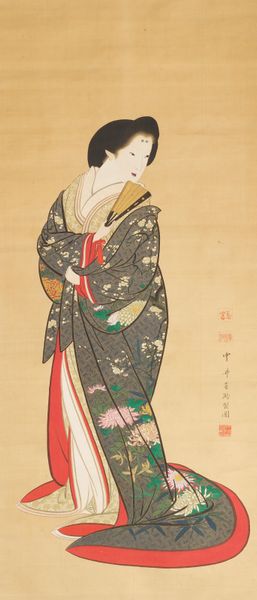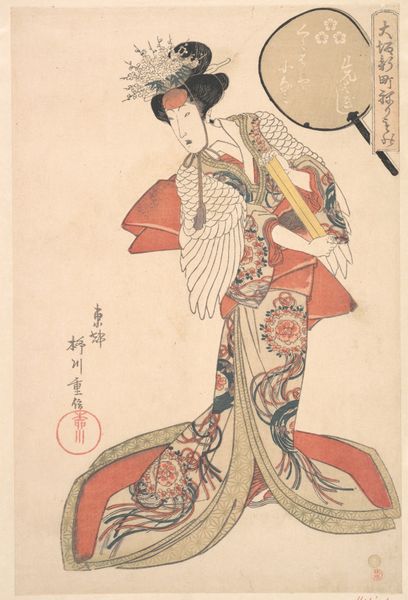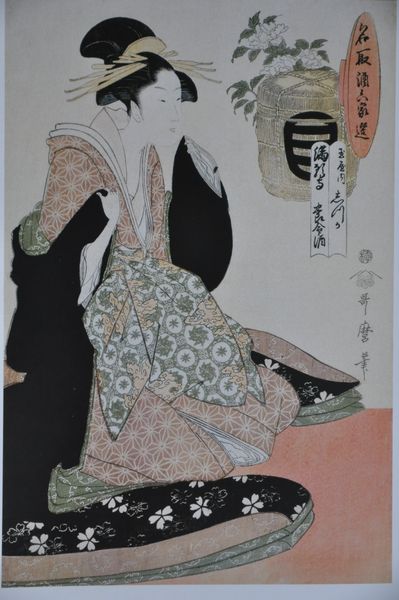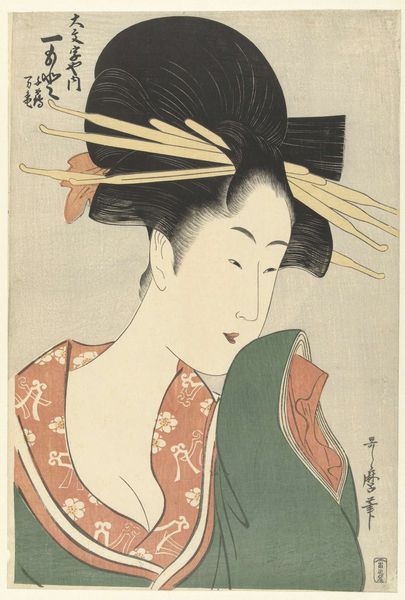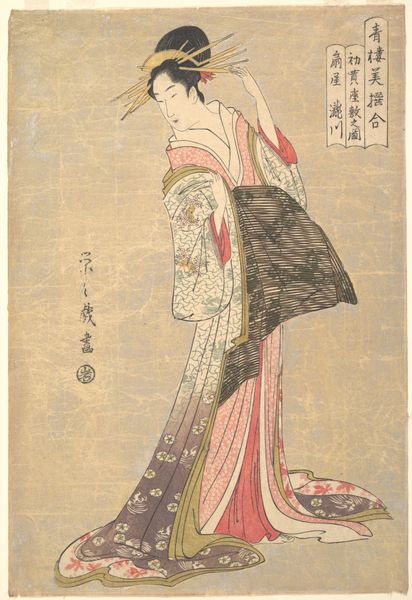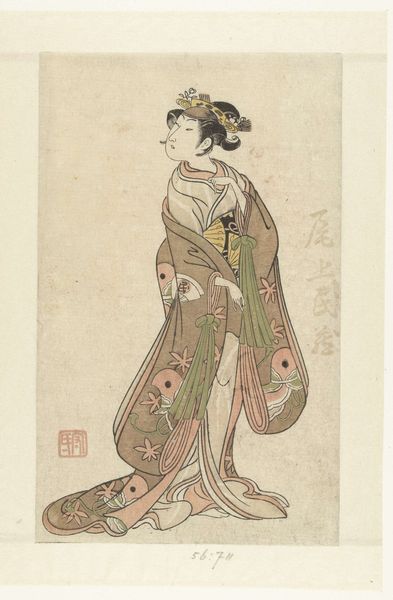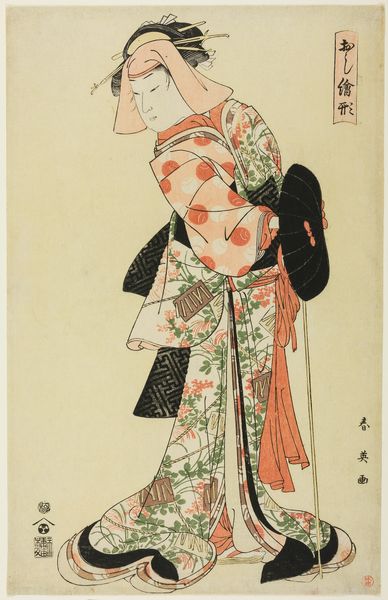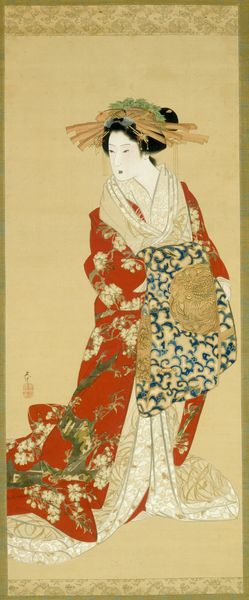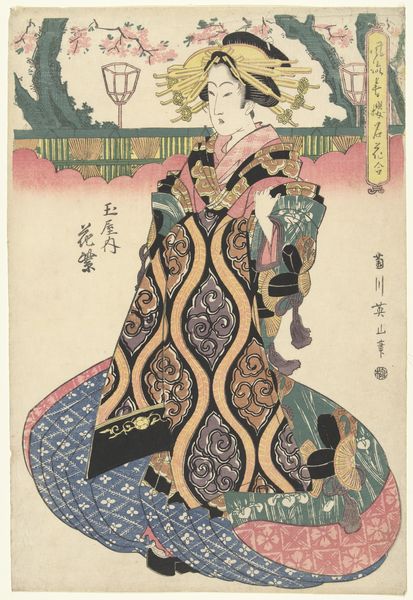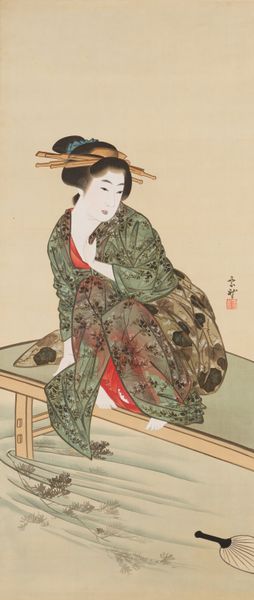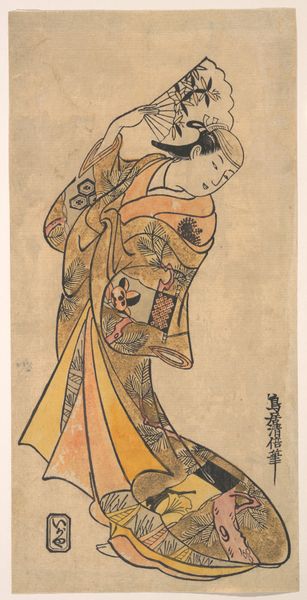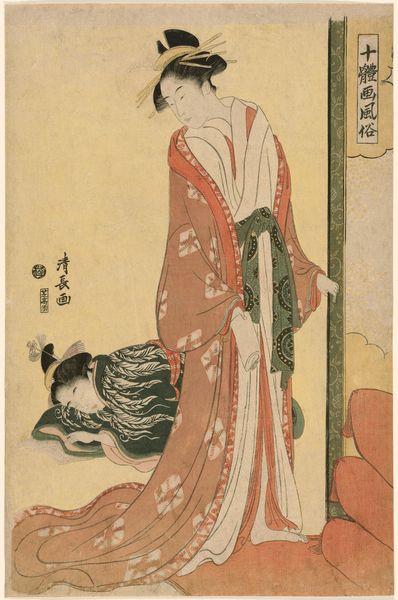
Dimensions: Image: 39 1/8 × 20 1/8 in. (99.4 × 51.1 cm) Overall with mounting: 81 1/4 × 26 1/4 in. (206.4 × 66.7 cm) Overall with knobs: 26 1/4 × 29 in. (66.7 × 73.7 cm)
Copyright: Public Domain
Curator: Before us is “The Hell Courtesan,” believed to be created sometime between 1868 and 1899 by the artist Seikei. It’s an ink and color on paper work in the style of Ukiyo-e. Editor: There’s something haunting about her eyes; they feel vacant. And the kimono’s swirling patterns— are those flames? The entire piece exudes a sort of elegant decay. Curator: Yes, it's striking how the figure is at once beautiful and slightly disturbing. Let's consider the materials, the ink and color applied to paper; this was part of a much larger production of popular imagery meant for mass consumption. Ukiyo-e prints democratized art, bringing these depictions of courtesans, actors, and landscapes to a wider audience. Editor: Absolutely, but beyond just accessible artistry, we must contextualize these images within a societal framework that celebrated, yet objectified, these women. Courtesans held a particular role, possessing unique cultural capital within Edo period society, but the underlying power dynamics were always at play. This artwork lives today within museum collections—an interesting place for something originally intended as a fleeting part of the consumer culture of its time. Curator: That contrast between original intention and current institutional display certainly adds another layer. I am also drawn to consider the work within the context of artistic craft: the specific types of papers used, the production of pigments during that period, how these prints, made with the labor of multiple hands, entered into the circuits of urban life, playing their small but relevant part in constructing social narratives and cultural capital. Editor: Indeed, it also serves to illuminate the power and political motivations embedded within images – how representations not only reflect but actively shape perceptions and even social standing. Seeing it here prompts contemplation about how far our perceptions around gender and representation have truly changed. Curator: Looking at Seikei's handling of materials reminds me again that beyond aesthetics, this artwork reveals the concrete means through which artistic practices were integrated into and supported the wider culture. Editor: And its afterlife, its placement within institutions like the Met, reminds us to continually interrogate our roles as viewers and interpreters in the long history of this representation.
Comments
No comments
Be the first to comment and join the conversation on the ultimate creative platform.
